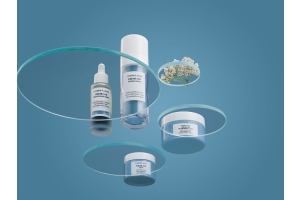Defying time through an anti-aging skincare routine wouldn’t be possible without the best duo: exfoliation and face masks. One key ingredient of exfoliation is the famous glycolic acid that is found in different skincare products. What is glycolic acid? This powerful AHA might just be the ingredient you need to get the smooth and bright skin you’ve been dreaming of.
What Is Glycolic Acid?
Glycolic acid is a type of alpha hydroxy acid that comes from sugarcane. It is known to be a very effective exfoliant that can perfectly tackle different skin issues. You can use glycolic acid for skin that shows signs of aging, dark spots, and acne or acne scars.
Glycolic acid's molecule size sets it apart from other AHAs. Since it has the smallest molecule for this type of ingredient, it can penetrate the skin more easily.
It is used in various skincare products, including cleansers, toners, serums, face masks, and face peels.
What Does Glycolic Acid Do for Your Skin?
Glycolic acid is an exfoliant. Specifically, it removes the first layer of dead skin. This exfoliating effect has many benefits, as it can help pores appear smaller and prevent ingrown hairs.
Glycolic acid promotes skin hydration and brightens the complexion. It has an anti-aging effect by smoothing fine lines and wrinkles and evening the skin. It can also fade pesky dark spots caused by sun exposure.
What else is glycolic acid good for? Acne. Thanks to its various effects on the skin, it deep cleans the pores, preventing blackheads and breakouts.
How To Use Glycolic Acid
Among the many glycolic acid benefits, are its efficacy and safety. However, it is a powerful ingredient and some caution should be exercised. First, it’s extremely important to wear sunscreen consistently because glycolic acid can make your skin more sensitive to sun exposure.
It is best practice to give your skin some time to adjust. Start by using only a few times a week and increase when you see that your skin reacts well to the product.
Like with most AHAs, choosing a product with a concentration of 10% or less is recommended. However, it will also depend on your skin type and your end goal. Even if glycolic acid is beneficial for several skin types, you won’t treat juvenile acne the same way you treat dark spots on aging skin.
Several over-the-counter products contain a fair amount of glycolic acid and work well. You can treat yourself to a professional glycolic acid face peel. The main advantage is that a professional will give you exactly what your skin needs. However, these treatments can be irritating, so you want to approach them carefully.
While glycolic acid and retinol are effective ingredients, they should not be used together, especially at the same time. Both increase your skin's sensitivity to sunlight and are best applied at night. If you want to include both in your routine, it's a good idea to alternate nights to avoid over-exfoliating and irritating your skin.
Of course, the best course of action is to ask your dermatologist. They can advise you on the best products for your skin.
How Often To Use Glycolic Acid?
This AHA is an amazing exfoliant, and it is crucial to know how to use glycolic acid properly. Like other similar acids, it shouldn’t be used every day, at least not at first. If you are using over-the-counter products, the best method is to start by using them two or three times a week. Start by applying glycolic acid two or three times a week. If your skin doesn’t get irritated, increase to three or four times a week. Keep going gradually and give your skin a rest if any irritation occurs. Eventually, when your skin is used to the peel, you can use the product daily.
This is true for most products that you buy, which usually contain between 5% and 10% glycolic acid. If your product contains 1% or 2% concentration, daily use from the start shouldn’t cause problems, but ask your dermatologist first.
It's important to apply it at night, as it can make your skin more sensitive to sunlight. You should always use sunscreen, but it’s even more necessary when using this type of acid.
Let the Power of Glycolic Acid Give You the Smoothest Skin
Glycolic acid is a key element for achieving smooth, plump skin. Make sure to carefully check the ingredients of other products you are using to avoid causing irritations by mixing potent molecules. Whether you introduce a glycolic acid serum into your daily routine or opt for a peel treatment done by a professional, never hesitate to ask your dermatologist if you have any questions or concerns.






